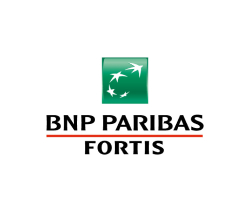Summary: For token transfers between Solana and Polygon, the preferred platform is the official Solana bridging protocol, Portal Bridge by Wormhole. This service stands out for its cost-effectiveness, typically keeping transaction fees between $1 to $5. Following prior security issues, Portal has significantly bolstered its security measures, demonstrating a strong dedication to protecting user assets. These improvements position it as a reliable and economical choice for those seeking safe, fast and affordable token transfers.
Can I Bridge from Solana to Polygon?
Certainly, transferring your digital assets from Solana to Polygon is feasible and secure. For completing this transaction, you can utilize specialized cross-chain bridging platforms. These bridges ensure smooth token migration, fully compatible with your chosen Solana and EVM-compatible digital wallets. This approach allows for the efficient movement of major cryptocurrencies like SOL, MATIC, USDT, ETH and other coins into Polygon's Mainnet.
How to Bridge from Solana to Polygon
Initiating a seamless bridge between Solana and Polygon is a straightforward process, notably when utilizing the user-friendly Portal Bridge. This cross-chain protocol facilitates swift and cost-effective transfers of stablecoins such as USDC or USDT, helping you navigate the transition from the SOL network to Polygon within minutes.
Here's your short guide to effortlessly transfer your tokens between these networks:
- Visit the Portal Bridge website and connect your Solana-compatible wallet.
- Pick Solana as your origin chain and Polygon as your destination chain.
- Select the token and the amount that you would like to bridge.
- Complete the transaction by approving the prompts in your Solana wallet, wait two minutes and the tokens will arrive in your destination wallet.

Is Portal Bridge Safe?
The Portal bridge was previously hacked for over $320 million in one of the largest exploits in DeFi history. That said, the application has patched up their issues and the investors behind the bridge, namely Jump Crypto, refunded all users that were effected by the exploit. While this may seem concerning, we still believe that Portal is a secure bridge because in the event of another breach, the team has shown a commitment to backstop user funds.
Solana to Polygon Bridging Fees
Solana and Polygon stand out as affordable proof-of-stake networks, offering users an affordable way to transact between them. While transferring assets from higher-cost chains like the Ethereum mainnet might incur substantial fees, typically as high as $20, the story is quite different when it comes to bridging between these chains.
For those looking to make a transfer between these two low-cost networks, the financial burden is significantly lighter, with fees generally ranging between $1 and $2. This competitive pricing makes asset transfers between Solana and Polygon an economically savvy choice for investors seeking to minimize costs while maximizing potential returns.
Final Thoughts
In conclusion, leveraging the Portal Bridge for transferring assets between the Solana and Polygon networks emerges as an affordable and reliable choice. Despite previous setbacks, the platform has proven its dedication to user safety, making it a trusted tool in the crypto landscape. Investors seeking to minimize costs while ensuring secure transitions should consider Portal Bridge as a viable option in their investment strategies.







.svg)
